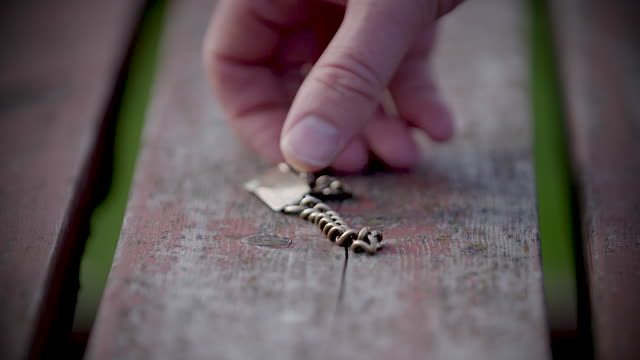
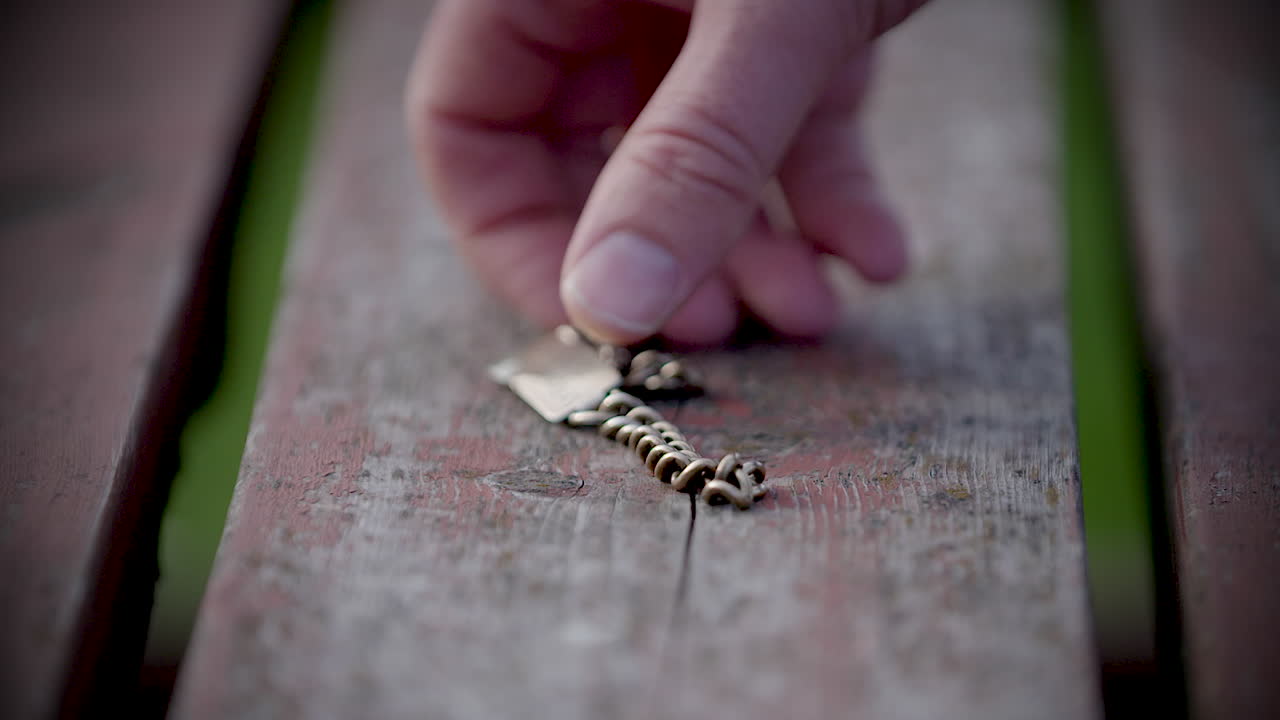
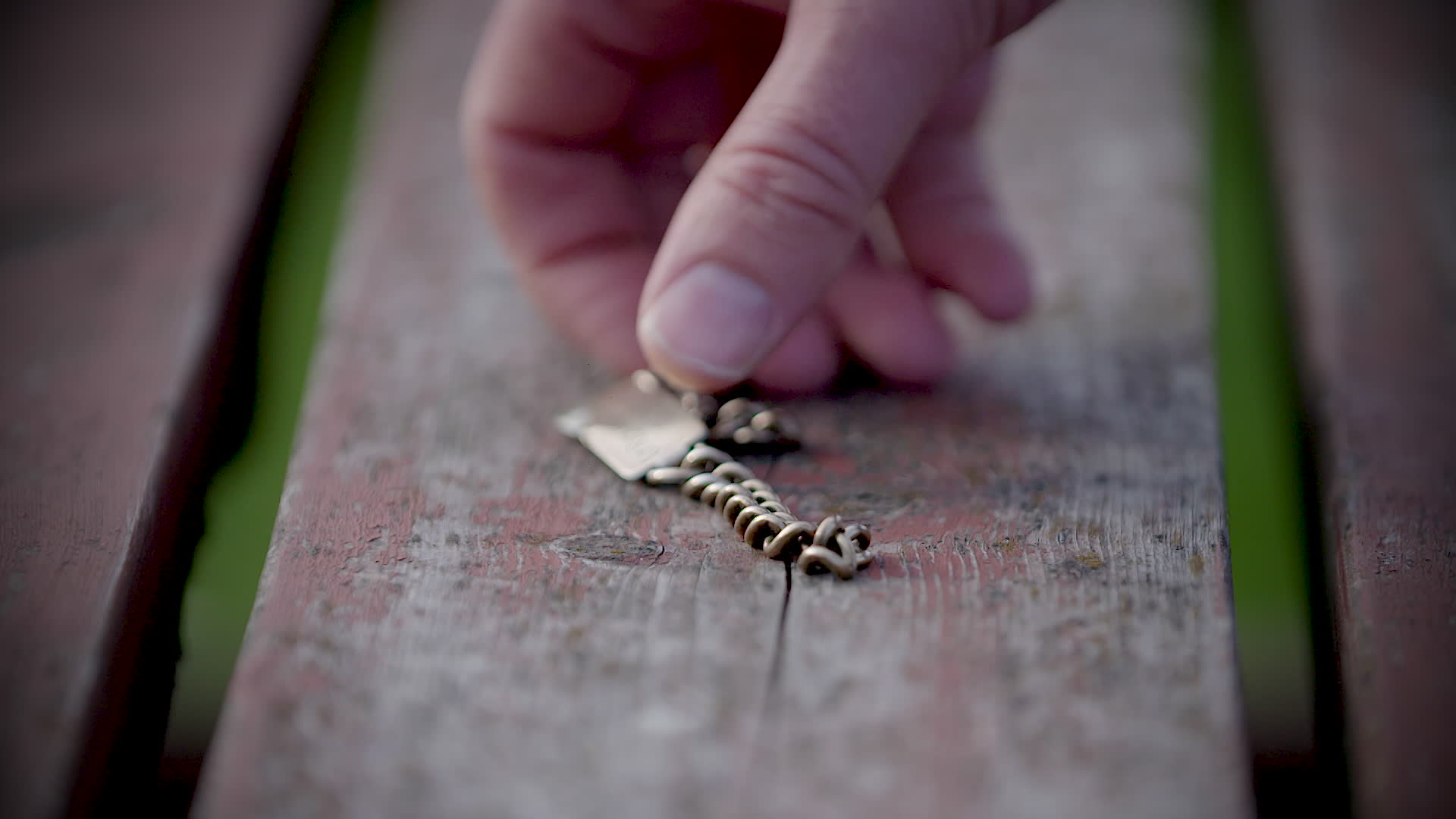
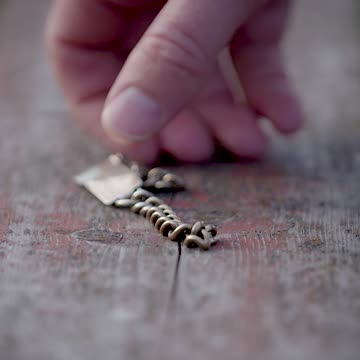
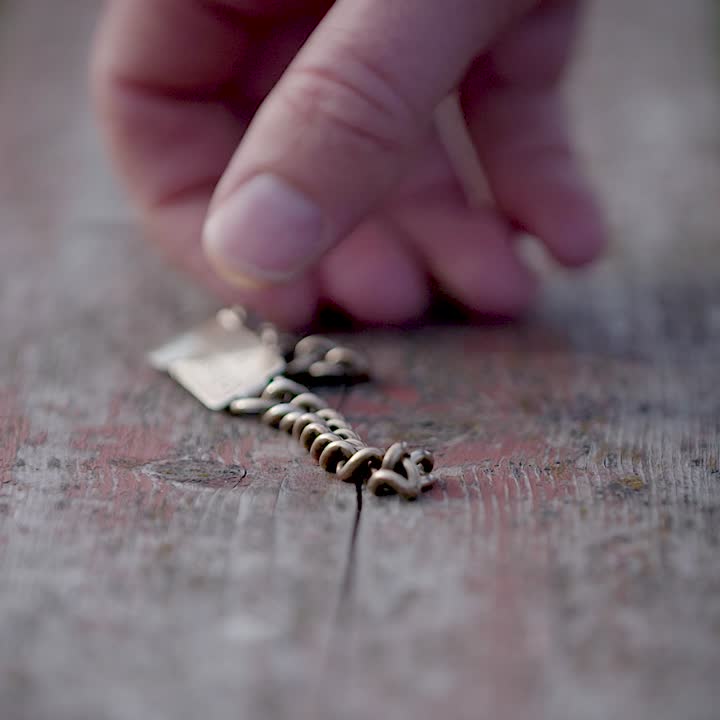
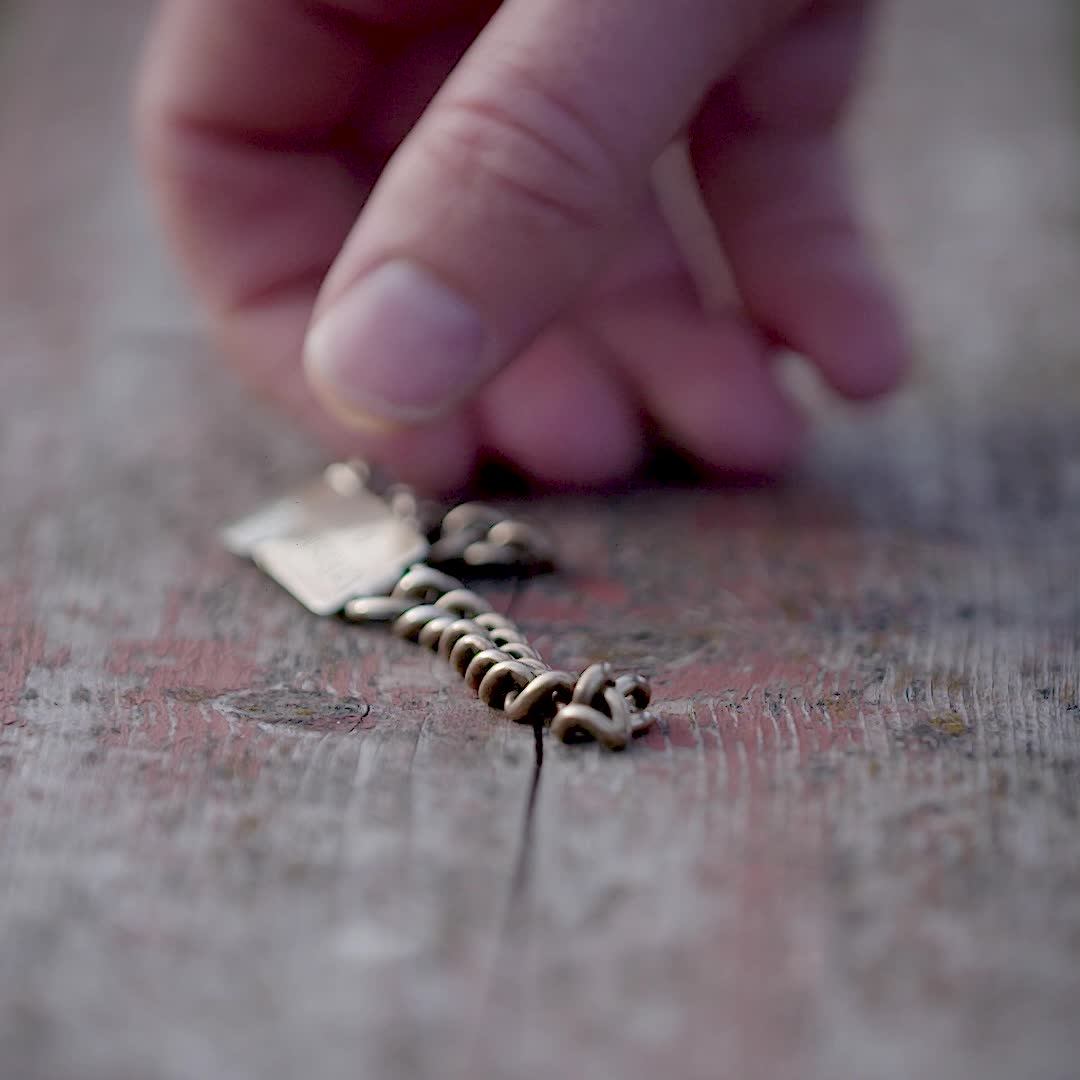
The Bracelet
The chest of drawers in the great-granddad’s house hid a story of real courage and top-secret operations. That is until Jørn accidentally pulled out the top drawer of the dresser.
Suddenly it was there again.
The small, shiny bracelet with engraved a completely unknown name.
The treasure that appeared in a chest of drawers, when Jørn Løite moved into his grandfather’s house in Drangedal, in the south of Norway.
Jørn had decided to clean and organize the attic in the house his grandparents built in 1951.
He weighed the bracelet lightly in his hand.
It gave him a special feeling.
A gold-colored, engraved metal plaque, attached to a thin chain. A small dent in the plate. A broken pendant. Otherwise in good condition.
Jørn took a closer look at the piece of jewelry.
He read the text.
The bracelet has engraved LT Richard A. Bosch 0-783238 BT. 0
On the back side: Ever with me, Jo´
What story hid the bracelet that was found in Jørn's house?
He could not put the bracelet down again. He wanted to find out who this Richard might be.
Could he be alive?
No one in the family or the village could give an answer to where the little bracelet came from.
Now, Jørn grew really curious.
And what do you do when you wonder about something nowadays?
You «google» it.

BECOME CURIOUS: Jørn Løite found a mysterious bracelet in a chest of drawers in the attic.
Foto: Håkon Eliassen / NRKUnknown photos
He searched for the name. The type of bracelet.
Soon he came across his first lead.
On the website of the Carpetbagger Aviation Museum in Harrington, England, he got a hit on the name.
Jørn sent an e-mail. A short time later he got a reply.
It turned out that an enthusiastic museum director, Roy Tebbutt, had an answer.
Soon, exciting things began to happen.
The detective received pictures of a young American soldier. Both an individual portrett and a group photo with peers in front of a plane. Smiling men in uniforms.
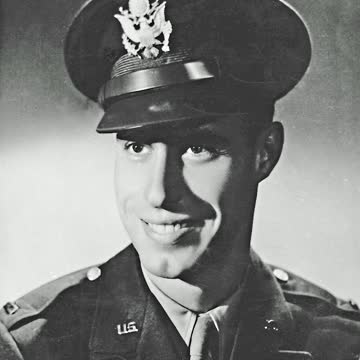
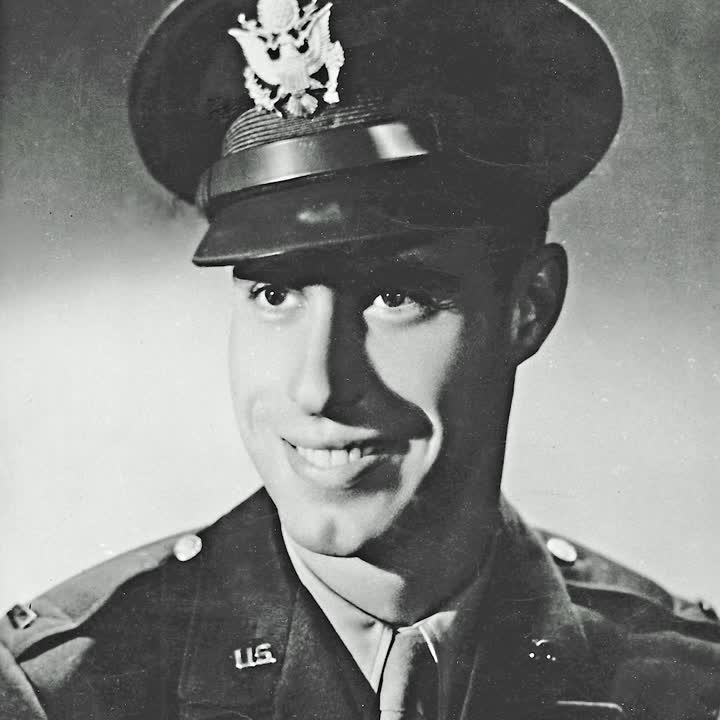




Richard A. Bosch and the crew on «Coockie».
CARPETBAGGER AVIATION MUSEUMWho was this?
Why was the soldier's bracelet found in the forest county of Drangedal, or in Norway for that matter?
Jørn became increasingly excited.
The search for answers had begun.
Could he bring the bracelet "home" in some way?
Did this Richard A. Bosch have any descendants?
With helpers far and near he would soon get closer to the story of the unknown man.
The soldier with whom he had an unbeknownst relationship.
Never returned home
On the night of April 7, 1945, four B-24 Liberator bombers took off from Harrington Airport in Northamptonshire, England.
Twelve American men were on board in the plane "Cookie" this winter night.
Four of them were paratroopers associated with the secret organisation OSS, which later changed its name to the CIA.
The rest of the young men were permanent crew members on the plane.
They were part of the US Air Force's operation called Carpetbaggers.
These were aircraft that delivered crew and equipment behind enemy lines, including Norway during World War II.
The mission this night was to deliver personnel and equipment to Norwegian and American soldiers, based at a place called Gjevsjøen, in the Snåsa municipality.
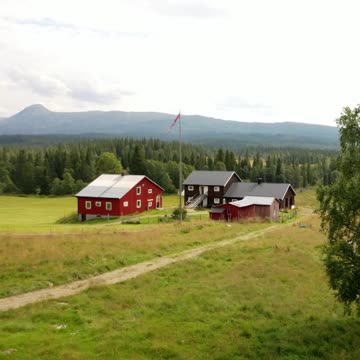
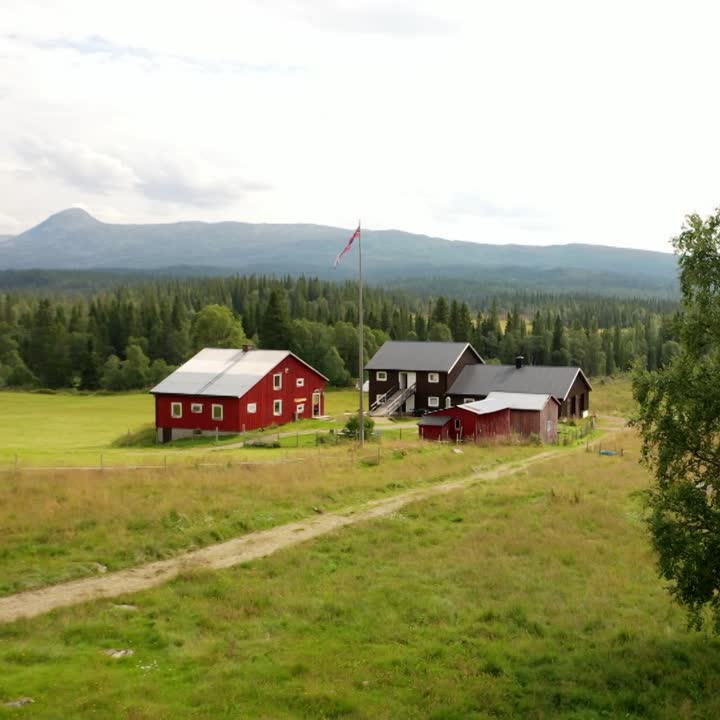
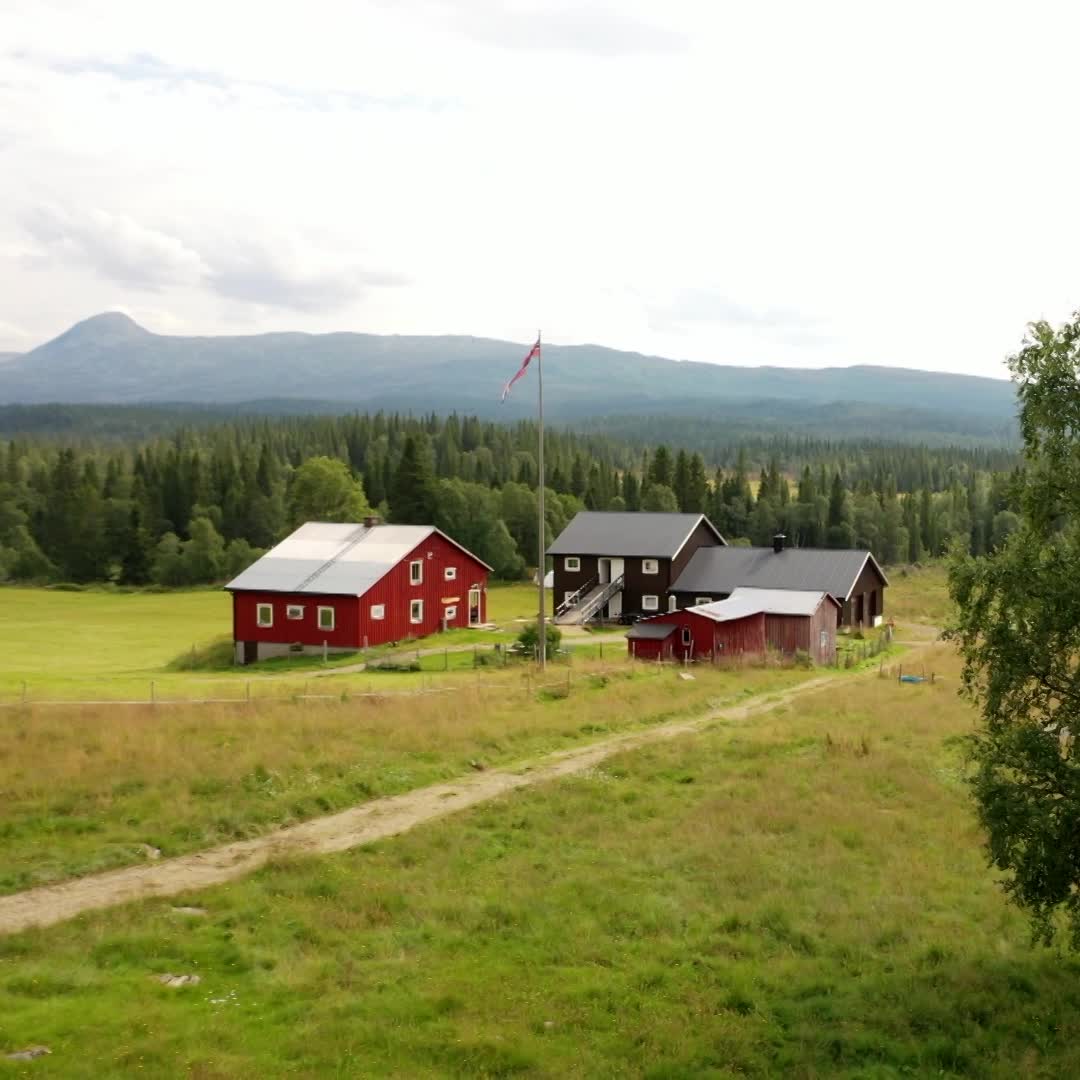



Gjevsjøen fjellgård in Snåsa, Norway.
FOTO: Tariq AlisubhThe group took part in the sabotage operations against the train line «Nordlandsbanen» to prevent the transport of German troops through Trøndelag in the last phase of the war. Known as «Operasjon Rype» – Operation Grouse.
Nazi Germany was in great need of soldiers. In northern Norway, there were over 100,000 men in German uniform at this time.
These were to be prevented from coming to the rescue of Adolf Hitler in Central Europe.
There was a lot of fog that night, but the plane with the top-trained soldiers still continued its journey towards the target in the winter darkness.
The aircraft, known to be difficult to hold stable in the air, flew low as it approached the base of the mountain.
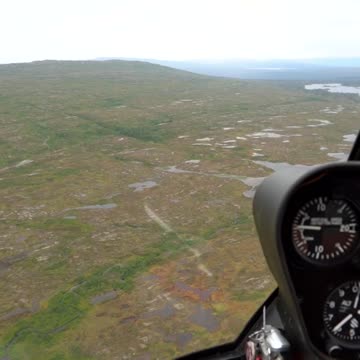

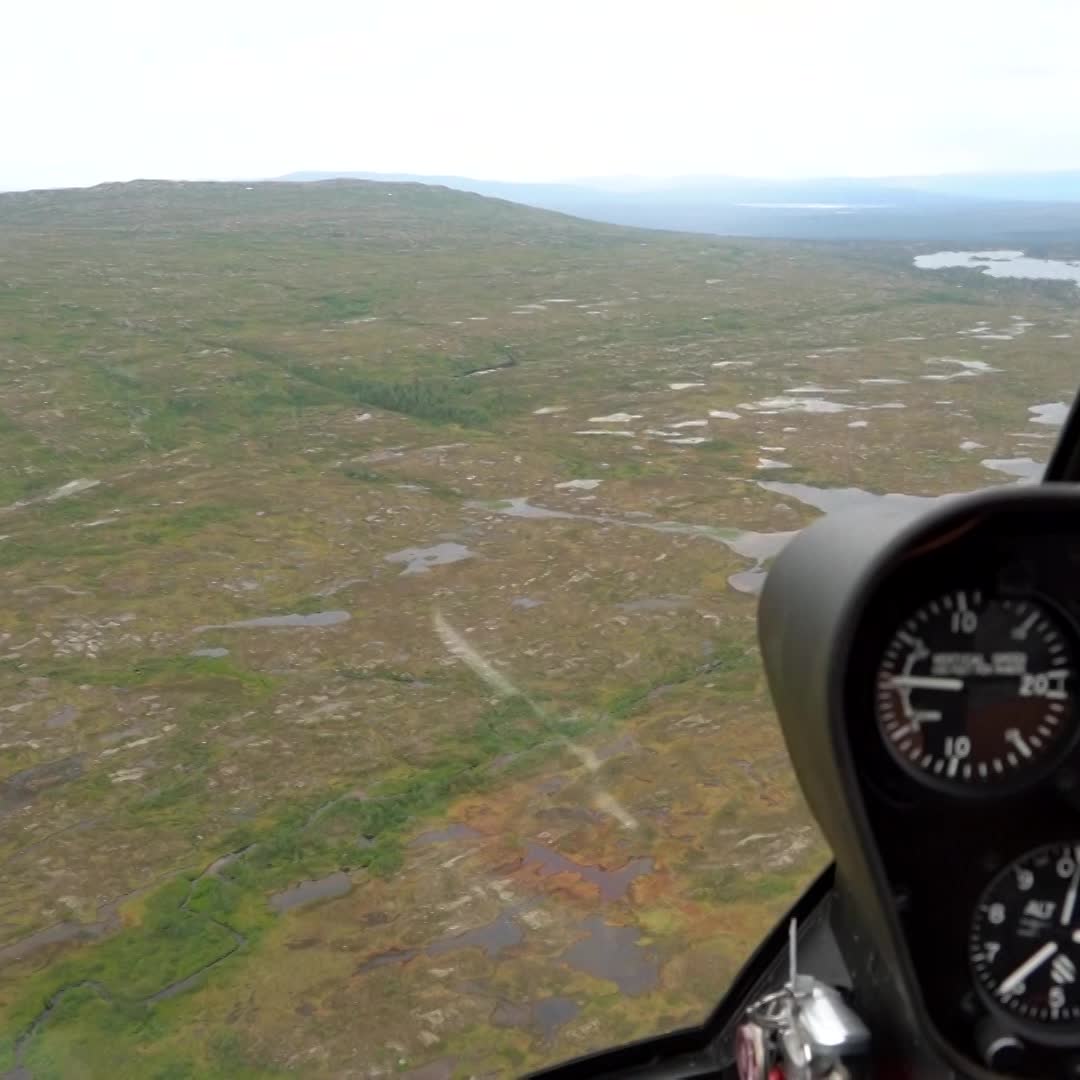



The plane crashed in the area by Plukktjønnfjell, in Snåsa municipality.
FOTO: Tariq AlisubhThey approached the right area.
The soldiers standing ready on the ground could hear the sound of the bomber circling over them in the air.
Then suddenly, they heard a bang.
After that it became completely quiet.
The men waiting on the ground understood that something terrible must have happened.
Found two weeks later
It took 14 days before the plane was found.
The 25-year-old Major William E. Colby (later head of the CIA from 1973-1976) set off with eight men for the crash site.
Among the twisted wreckage after "Cookie" lay the twelve dead soldiers, scattered in the snow-covered heather.
They had in all probability died instantly on the peak of Plukkutjønnfjellet, 790 meters above sea level.






One can only imagine what it was like to find one's fellow soldiers in the snow.
The ones who were supposed to come to their rescue.
The twelve dead men were carefully rolled into the parachutes from the plane, and temporarily buried side by side under rocks near the accident site.
A four-shot salute was fired after a short ceremony.
After the war, the soldiers were brought home and buried in England and the United States.
A few of the dead men’s belongings remained visible in the snow.
The twelve dead men were temporarily buried by their fellow soldiers.
Foto: FORSVARSMUSEET, RUSTKAMMERET SIN SAMLINGThe dead were honored with salutes deep in the mountains.
Foto: Forsvarsmuseet, Rustkammeret sin samlingFrom a memorial seremoni in 1949, after the accident in Snåsa.
Foto: Forsvarsmuseet, Rustkammeret sin samlingThe bodies are transported down from the mountain by horse, wrapped in a parachute.
Foto: Forsvarsmuseet, Rustkammeret sin samlingThe coffins are paddled with three of the dead soldiers over to the plane after the war was over.
Foto: Forsvarsmuseet, Rustkammeret sin samlingA few items from the crew members were found.
Including some uniform marks, that showed the rank of a lieutenant on board. 25 year old Richard A. Bosch.
Important story
– Is it really true, exclaims a clearly surprised Ebbe Deraas, when he hears about the bracelet for the first time.
The jewelery that has mysteriously appeared in Drangedal, almost 900 kilometers further south in the country.
Deraas is a retired colonel, and former commander of the local Home Guard district.
He is also the leader of a group of enthusiasts. «OSS Gjefsjøen».
They work to ensure that the history of the demanding resistance work in the Snåsa area is not forgotten.
He hardly believes what he hears.
– Can we meet?
Right afterwards he stands in front of Jørn Løite. Two men who have never heard of each other before, meet to talk about an incident that happened more than 75 years ago.

SPECIAL MEETING: Jørn Løite and Ebbe Deraas are both fascinated by the bracelet's history. This summer, Deraas and several enthusiasts will open a museum to commemorate the events in the Snåsa area during the war.
Foto: Håkon Eliassen / NRKFor the youngest of them, the story from Snåsa is completely new.
He has thought a lot about the soldiers' fate on the night of April 1945.
– The seconds before they hit the mountain. What do you have time to think? They must have known that it went wrong, he says thoughtfully.
The retired colonel agrees:
– This was an operation right on the limit of what planes and crew could do. Oftentimes it went well, but this time it did not.
Important clues
Deraas would like to help Jørn find out the background of the bracelet.
He establishes good contacts in the United States.
One of them is 94-year-old William "Bill" Becker, leader of the veteran’s organization Legion of Honor.
He can better than anyone understand how fellow soldier Richard A. Bosch felt in the last hours of his life.
During the war he was stationed at Harrington Air Force Base in England.
At the same time as fellow soldier Richard A. Bosch.
He participated in the same type of life-threatening mission towards the end of the war, but in a different plane. The two soldiers did not know each other.
Today, Becker lives in California.
The memories of the war are still totally clear.

TIME WITNESS: William "Bill" Becker (94) was on board one of the planes that supplied American troops in the Norwegian mountains during the war. He was later awarded the Norwegian Defence Medal for his efforts.
Foto: PrivatDemanding trips
A bomber normally has the task of pointing out bomb targets, the veteran explains.
On the top-secret missions, the soldier was to act as «the plane's eyes». He was probable the one who told the pilot which direction the plane should choose in the dark, when it hit the mountain, the 95-year-old thinks.
Becker remembers that they heard that "Cookie" had crashed, but he knew no more details. It was not something they talked about.
They were not even allowed to talk about their own role during the war before in the early eighties.
Becker is more than happy to take on the task of finding out if the fallen soldier has relatives alive.
Together with Norwegian-American Erik Bruun, they are looking for relatives with great enthusiasm. It doesn´t take many days before a radiant Deraas is on the phone again.
– We have done it!
«Oh, my good»
Kroken, Drangedal 2 June 2020.
Jørn is a little sweaty, t-shirt glued to his back. Not just because it's unusually hot outside. He's waiting for a call from the United States.

Jørn Løite looking at the PC in conversation with Linda Bosch Odess.
Foto: Thomas Nicolai Blekeli / NRKHe walks excitedly around the living room. Back and forth.
A laptop lays on a table, its display open, in the same house where the small bracelet with the big story was found in a chest of drawers.
The Skype call is ready.
He plants himself in the chair.
The cup of coffee in his hands shakes a little
Then there is a sound on the speaker.
First, a voice is heard.
Then a face appears on the screen.
A smiling, older woman looks at him with interest through her spectacles and the camera on the PC.
The blanket with the American flag on the divan behind her leaves little doubt that we have come to the right place. Not to mention country.
He sees the niece of the soldier who lost his life at Snåsa in the spring of 1945.
75-year-old Linda Bosch Odess, living in the small town of Dunellon in Florida.
Does she want to talk to a Norwegian who has found her deceased uncle’s bracelet, 75 years after he died?
– Yes!
She lives in Dunellon, Florida. Jørn lives in the village of Kroken in Drangedal, more than 7000 kilometres away.
They have almost nothing in common. A simple bracelet binds them together.
– Hello, says Jørn, a little cautiously.
– Hello! Linda exclaims, with great enthusiasm.

It was a memorable moment for both Jørn Løite and Linda Bosch Odess when they got to talk to each other on Skype for the first time.
Foto: SkjermdumpShe thinks this is absolutely amazing.
Linda can guarantee us that she never in her wildest imagination had thought she would experience something amazing like this.
The first time veteran Bill Becker called, she was sceptical.
When Linda understood what the stranger on the phone was telling her, she became speechless.
– It was the biggest gift anyone could give me. Not just the bracelet itself, but that everything has a connection, she says seriously.
For the past twelve years, the 75-year-old has tried to find a suitable place for several medals and prizes she has inherited from her uncle, without success.
Then, all of a sudden, a phone call came from a man she had never heard of.
Linda, Jørn and Ebbe have now agreed on that the bracelet and all the assets after Richard A. Bosch will end up in the museum to be established in Snåsa.
– This is an answer to my prayers. I thank you from the bottom of my heart, she says to Jørn.

Linda Bosch Odess.
Foto: Dalton HobbsNever met "Uncle Dick"
Linda was born exactly one month after the plane with her uncle on board crashed in Norway, in May, 1945.
She heard a lot about him as a child.
The family was very proud of him, she says. The uncle who sacrificed his life in the fight against Hitler-Germany.
He was born in Pennsylvania on September 7, 1919.
– A stood for Albert. The nickname was "Dick", says the niece.
The cheerful soldier was initially stationed in Hawaii, and also played the trumpet in a band on cruise ships.
She feels a closeness to her uncle, even though he died before she was born.
Just before he left on his last mission, the soldier gave a gift to Linda's mother. He knew she was pregnant.
– A white christening gown. It was for me.

SAD NEWS: Richard A. Bosch's parents received sad news at the very end of the war. Later, both the bracelet and the other military assets after the 25-year-old bombardier will end up in a museum by the mountain farm in the Snåsa mountains.
Foto: Nils Fridtjof Skumsvoll / NRKLinda is amazed when she hears that the plane crashed in the fog, just a few weeks before the war was over.
The family was told that it was shot down by the Germans.
– He loved to fly. He loved his country. He loved helping others, she says quietly.
How did the bracelet end up in Drangedal, almost 900 kilometres from the accident site in Snåsa?
And who exactly was "Jo", which is mentioned in the inscription on the back of the jewellery?
We still do not know.
Neither do Jørn and Linda.
The circle is in a sense closed for them both.
In their own way, they now know more about the story than they ever thought.
– This is my heritage and my past, says Linda, while a tear flows slowly down her cheek.
The small, dented bracelet could have been left in the dark at the bottom of the dresser drawer.
Instead, it has helped to tell the story of the 25-year-old soldier who sacrificed his life in the fight for a free Norway.

The memory of Linda Bosch Odess’ uncle will be preserved by a museum, so that more people can get to know the story of the events in Snåsa during the war.
Foto: Dalton HobbsDo you know anything about this?
Hello!
This story is not completely finished.
Not until we know how the bracelet appeared in Jørn's great-grandfather's chest of drawers in Drangedal. Do you have any idea how this may have happened? Then you are welcome to get in touch.





